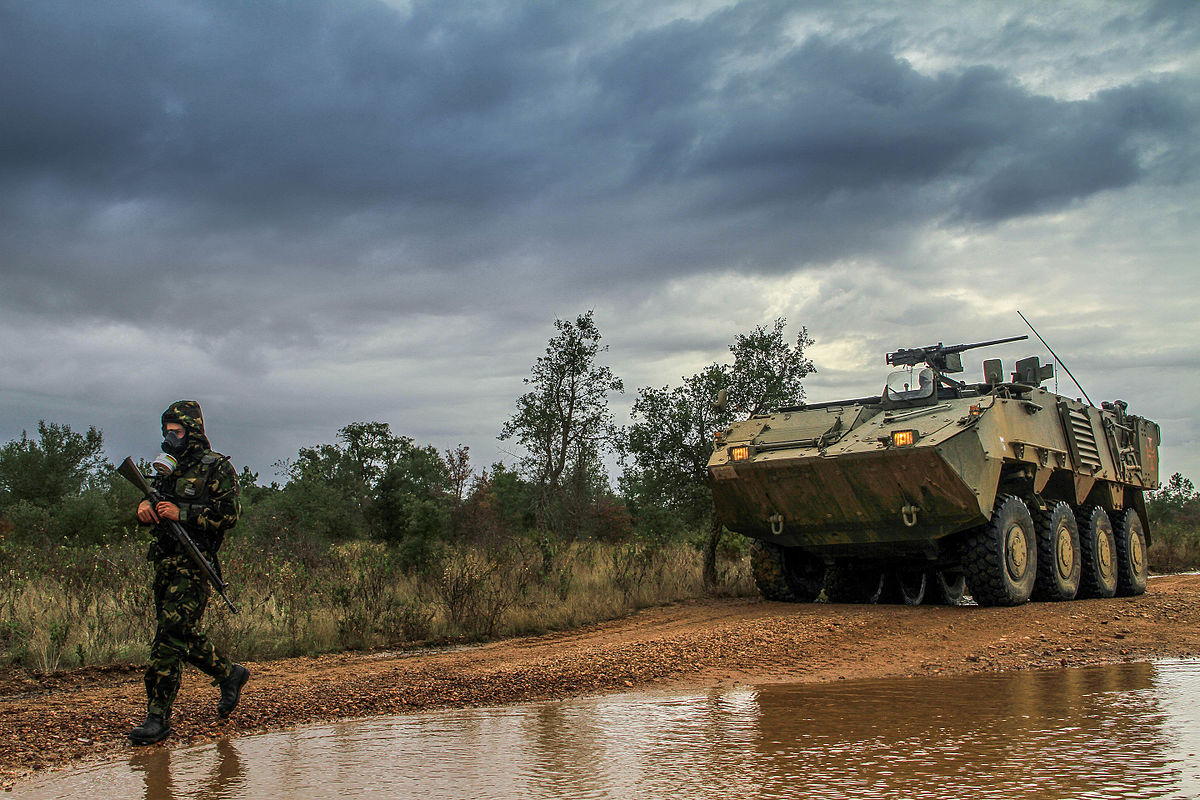Featured Image: Global militaries are a major contributor to climate change, however, we face many challenges when assessing their environmental footprint. Copyright: CC BY-SA 4.0 via. wikimedia commons.
Report: Estimating the Military’s Global Greenhouse Gas Emissions (2022)
Authors: Dr. Stuart Parkinson & Linsey Cottrell
Organisations: Scientists for Global Responsibility & Conflict and Environment Observatory
War is likely to worsen in the near-future as climate change forces more disasters, political instability, and poverty onto the planet and strains resource supplies. Yet war is not just a product of climate change: it is also a major cause. In addition to the societal devastation it creates, militarism is a major emitter of greenhouse gases and contributor to environmental degradation. Politicking from the worst emitters has ensured that military emissions are shielded from the same type of accountability seen across other sectors such as agriculture, transport, land use, technology, and waste. For example, the latest installment of the IPCC report barely mentioned military emissions despite its immensely detailed analysis of other sectors. A recent report from Stuart Parkinson (Scientists for Global Responsibility) and Linsey Cottrell (Conflict and Environment Observatory) helps correct this oversight and unpacks the impact of war on climate change.
The report begins with an overview of how important it is to improve the tracking of military emissions and for governments to provide accurate reporting of military data, which has been lacking. Currently, it is voluntary for many nations to report on these emissions, causing them to be often neglected when thinking about causes, impacts, and solutions to climate change. Furthermore, military data is often buried within civilian sectors, making it difficult to identify. The authors explain that they are working with limited data to estimate military emissions. Their report offers a valuable starting point and aims to encourage further research and action.
Lacking concrete emissions data, the authors estimated national military emissions through a simple calculation combining the following variables: operational emissions per head of active personnel for military bases (termed stationary emissions), number of active military personnel, the ratio of emissions between mobile sources (e.g. aircraft, marine vessels, and spacecraft) vs. stationary sources, and a supply chain multiplier to account for the production process (based on an economic model). They multiply together these variables and then divide them by the number of active personnel for a figure of average emissions per head.
Data from three countries – the USA, UK, and Germany – are explored, as they report emissions more reliably, before estimating other nations’ emissions based on a rough comparison with the three example nations. For example, the emissions from most of Europe and Latin America are estimated to be similar to that of Germany and the UK, while Eurasian nations (Russia and Ukraine) – with large militaries and carbon-intensive economies – are more similar to the US. Those from China, India, and the rest of Asia are considered halfway between Europe and the US based on their carbon-intensive, medium-developed economies.
After their calculation based on the limited data available, the authors conclude that operational emissions alone account for roughly 1% of the global annual total. 5.5% of the global carbon footprint is related to military activity when the supply chain is considered in full, equivalent to the contribution of livestock farming (which contributes 5.8%). This is an enormous amount and, as this research is still in its infancy and based on an estimate, the number could increase in future studies. Many warming sources aren’t factored into the calculation at all, including the fires and infrastructure damage associated with war, rebuilding, healthcare, and other expenses. Moreover, the accuracy of the estimate depends on the assumption that the data from the US, UK, and Germany is complete and accurate. In many wars more people lose their lives as a consequence of the reverberating impacts, such as poverty, disease, crime, lack of healthcare, psychological trauma, pollution, or unexploded bombs/landmines. Similar complications exist when attempting to track emissions. As the authors note several times, reporting standards urgently need to improve to ensure that these emissions can be included in our plans to decarbonise in line with internationally agreed targets.
The work of Scientists for Global Responsibility and the Conflict and Environmental Observatory is essential in equipping us with the tools to understand climate change in a space that is often avoided. In addition to being a major emitter – where we have a limited carbon budget to stay in line with our targets – militaries require staggering budgets and labor that could be used to tackle global problems like climate change. A recent report by the Costs of War Project showed that the “Wars on Terror” have claimed 4.5 million lives while racking up a financial cost of trillions of dollars. Military emissions remain a challenging problem to grapple with (I’d recommend Neeta Crawford’s book The Pentagon, Climate Change and War for further discussion of solutions with reference to the US military) but the first step is accurate data reporting and accountability. This study offers a limited but immensely valuable insight into the problem of military emissions and can be used as a springboard for a more detailed analysis, with the support of the international community.
How Much is War Fuelling the Climate Crisis? by Jordan Healey is licensed under a Creative Commons Attribution 4.0 International License.

